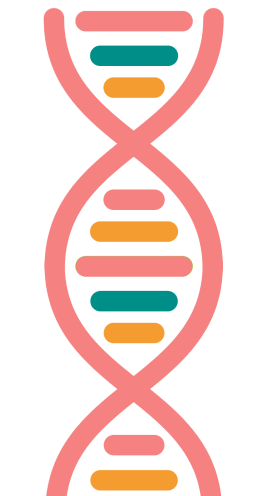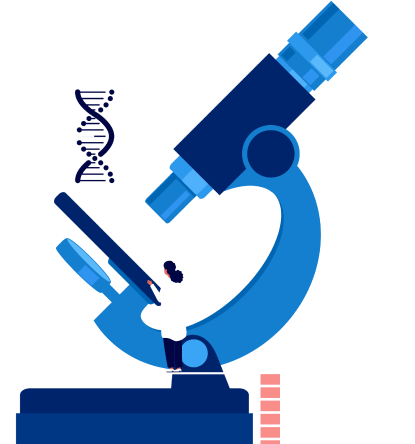What is FOP?
FOP is a rare genetic disorder.1 It causes bone to form in the soft and connective tissues, such as muscles, tendons and ligaments, where it should not be growing.1-3
Bone forming outside of the skeleton is called
heterotopic ossification (HO). 4
4
Heterotopic ossification or HO is the presence of bone where bone should normally not exist.4
Over time, ribbons, sheets and plates of extra bone form throughout the body in places where bone should not be.5,6

Alys caring for her son Kenny with FOP

Luc, living with FOP
Once formed, this extra bone does not go away and can lead to joint stiffness. Where bone forms across the joints, it can progressively restrict normal movement, potentially causing locked joints such as locked arms or a locked back.5,7,8
Extra bone formation in people living with FOP can be triggered by knocks and falls and certain medical procedures, such as having a biopsy or an injection into a muscle.1,9
It is important to get a diagnosis of FOP and be aware of how to avoid
flare-ups
Patients with FOP experience sporadic and unpredictable episodes of soft‐tissue swelling, pain, reduced movement, stiffness and warmth, referred to as ‘flare‐ups’.5
of the condition.
What causes FOP?
In 2006, researchers discovered that people with FOP have alterations in the activin-like kinase 2/activin receptor type-1 (ALK2/ACVR1)
gene.
Genes are small sections of DNA that can act as instructions to make proteins. Genes are passed on from parent to child, and thus are the basic units of inheritance.16
10
The ALK2/ACVR1 gene is involved in the formation of normal bone. In people with FOP, the change in the gene, also known as a
genetic mutation
A change in the sequence of an organism’s DNA, which can result in a change in the protein that is made that from DNA.15
, results in the formation of extra bone in places where it should not be.10
The genetic mutation occurs spontaneously in most people with FOP, meaning it is not inherited from a parent. However, FOP can also be passed on from parent to child.10
Certain signs of FOP are present from birth,2 but diagnoses are often not made until much later in childhood when people with FOP begin to experience
flare-ups.
Patients with FOP experience sporadic and unpredictable episodes of soft‐tissue swelling, pain, reduced movement, stiffness and warmth, referred to as ‘flare‐ups’.5
11

How is FOP managed?
Until recently, management of FOP has included only supportive measures, to help people avoid new bone formation and alleviate symptoms:6

Careful avoidance of activities or procedures that might cause
flare-ups
Patients with FOP experience sporadic and unpredictable episodes of soft‐tissue swelling, pain, reduced movement, stiffness and warmth, referred to as ‘flare‐ups’.5

Pain relief for symptoms of
flare-ups
Patients with FOP experience sporadic and unpredictable episodes of soft‐tissue swelling, pain, reduced movement, stiffness and warmth, referred to as ‘flare‐ups’.5

Optimization of residual physical function through protected active range of motion e.g., warm water hydrotherapy*
*Active range of motion should be performed in a safe, low-impact environment. Traditional physical therapy, including passive range of motion, must be avoided due to risk of over-stretching and soft tissue injuries.5
FOP facts
1. FOP can affect anyone
FOP can affect anyone regardless of sex, race, ethnicity or country of origin.7 FOP can be inherited but for most people it is caused by a spontaneous
genetic mutation.
A change in the sequence of an organism’s DNA, which can result in a change in the protein that is made that from DNA.15
10
2. FOP may be misdiagnosed at first
Around half of people with FOP are diagnosed with a different disease before they are accurately diagnosed with FOP. Common misdiagnoses include cancer, other tumors, bunions, and other rare diseases.12
3. FOP management requires a team of professionals
From providing medical care to social support, many different healthcare professionals work together to provide the best care for people living with FOP.3,6

2. FOP may be misdiagnosed at first
Around half of people with FOP are diagnosed with a different disease before they are accurately diagnosed with FOP. Common misdiagnoses include cancer, other tumors, bunions, and other rare diseases.12
3. FOP management requires a team of professionals
From providing medical care to social support, many different healthcare professionals work together to provide the best care for people living with FOP.10,12
4. Extra bone due to FOP is normal bone, it’s just in the wrong place
Bone that forms following an FOP flare-up is the same bone that the body makes normally. This bone is just formed in the wrong place, such as soft connective tissue like ligaments and tendons or certain muscles. Over time, this bone may start to build up and restrict movement across the joints and cause problems with mobility.1,2
5. The FOP community is growing
The International Fibrodysplasia Ossificans Progressiva Association (IFOPA) is a non-profit organization providing hope to people living with FOP and their families through education and support programs.13
In 2021, 360 people living with FOP across 69 countries were enrolled in the FOP Registry, a voluntary registry operated by IFOPA.14
1. Baujat G et al. Orphanet J Rare Dis 2017:12:123. 2. Kaplan FS et al. J Bone Joint Surg Am 1993;75-A:220–230. 3. Di Rocco M et al. Orphanet J Rare Dis 2017;12:110. 4. Shehab D et al. J Nucl Med 2002;43:346–53. 5. Kaplan FS. Clin Rev Bone Miner Metab 2005;3:179–181. 6. Kaplan FS et al. Proc Intl Clin Council FOP 2022;1:1–120. 7. Pignolo RJ et al. J Bone Miner Res 2016;31:650–65. 8. Cohen RB et al. J Bone Joint Surg 1993;75-A:215–219. 9. Pignolo RJ et al. Orphanet J Rare Dis 2011;6:80. 10. Shore E, Kaplan FS. Nat Genet 2006;38:525–527. 11. Kitterman JA et al. Pediatrics 2005;116:e654–e661. 12. Sherman LA et al. Poster presentation P-841 at the American Society for Bone and Mineral Research (ASBMR) Annual Meeting, September 11–15, 2020. 13. International Fibrodysplasia Ossificans Progressiva Association. Available at: www.ifopa.org. Accessed August 2023. 14. International Fibrodysplasia Ossificans Progressiva Association. 2021 FOP Registry Annual report. Available at: www.ifopa.org/2021_fop_registry_annual_report. Accessed August 2023. 15. Scitable – Nature Education. Mutation. Available at: https://www.nature.com/scitable/definition/mutation-8/. Accessed August 2023. 16. Genetic Alliance; The New York-Mid-Atlantic Consortium for Genetic and Newborn Screening Services. Understanding Genetics: A New York, Mid-Atlantic Guide for Patients and Health Professionals. Washington (DC): Genetic Alliance; 2009 Jul 8. APPENDIX A, BASIC GENETICS INFORMATION. Available from: https://www.ncbi.nlm.nih.gov/books/NBK115558/.

